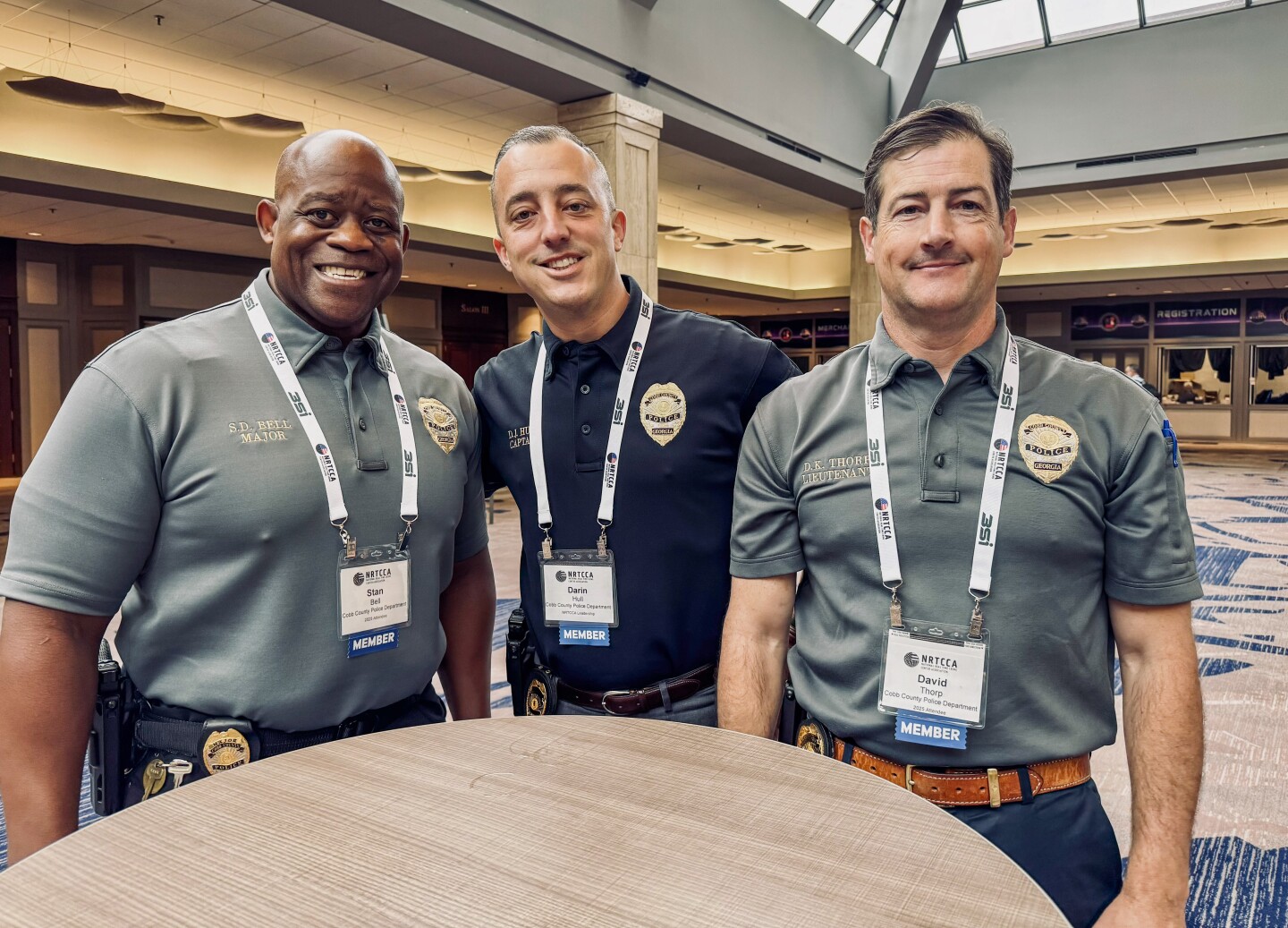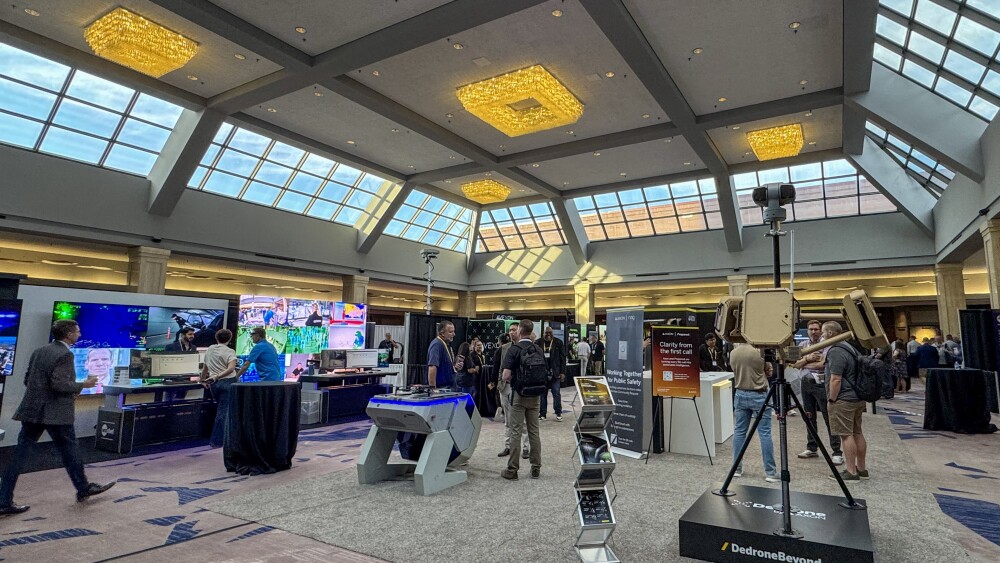Across the country, law enforcement agencies are connecting technology, data and expertise to create real-time intelligence hubs that enhance situational awareness and support officers in the field. During the National Real Time Crime Center Association’s annual conference in Atlanta (Sept. 22–25), law enforcement and technology leaders shared six key trends shaping how real-time operations are transforming policing.
Trend 1: Rapid growth
Real Time Crime Centers (RTCCs), around for almost two decades, have boomed in recent years. There are no verified numbers, but estimates suggest that around 300 law enforcement agencies across the U.S. have a centralized technology hub, and the number keeps rising.
RTCCs gather surveillance, intelligence and other data from multiple sources to aid with investigations — including traffic video, drone footage and camera feeds from private businesses, computer-aided dispatch (CAD), automated license plate readers (LPR), gunshot detection sensors, records management systems and GPS mapping — and integrate the data gathered into one information ecosystem.
The National Real Time Crime Center Association (NRTCCA) is an all-volunteer organization of law enforcement and public safety professionals. Over the past four years, attendance at the annual NRTCCA conference has skyrocketed — from about 200 people at the first gathering in Scottsdale, Arizona, in 2022 to 1,000 in Atlanta this past week, reflecting the massive surge in a field that’s still fairly new.
“The growth of the real-time community; the growth in interest from the public; the growth of traction with vendors — just the growth in knowledge is mind-blowing,” said Mike Ricupero, who recently retired from the New York City Police Department, where he commanded the the country’s first such technology hub, founded 20 years ago. He now works as director of law enforcement strategic engagement at the intelligence safety startup Rapid SOS.
| RELATED: How to fund a real time crime center (eBook)
Trend 2: Language and mission
Real time crime centers started with policing. Different names emerged as the concept spread among various-sized agencies and into communities with different demographics, socio-economic makeups and crime profiles. Now, there are real time information centers, real time intelligence centers, real time investigation centers and real time operations centers.
“Language matters. Language reflects the mission,” said Nikki Bell, manager of the country’s first Real Time Information Center (RTIC) at the police department in Vacaville, 35 miles southwest of Sacramento.
For her department, the center’s mission goes beyond policing — it’s meant to serve as a tool for public safety and community safety.
“And we are trying to figure out, how can we make these real-time spaces multi-disciplined, with a broader scope?” she said.
Vacaville and other agencies are deploying real-time tools, like first responder drones, to assist fire departments with structure fires, vegetation fires and accidents. Some departments work with hospitals, utilities, public transport authorities, school districts and universities, as well as emergency management agencies for disaster preparedness and response. There is also case-by-case cooperation with corporate security partners and neighboring agencies for large-scale or high-risk events.
Shifting the mindset from policing to a broader mission of real time centers “also helps with bringing down barriers and getting the buy-in from the community,” said Bell.
Trend 3: Cultural diversity and cross-pollination
Whether they’re located on the east coast or west coast, whether they’re in their infancy or more established, and whether they’re part of a small, medium-sized or large agency, every RTCC is different and comes up with innovative and creative approaches.
Take the staffing model. Some agencies, like the San Francisco Police Department, only have sworn staff in their real time investigation center. The advantage is that officers are often better at connecting the incoming data with operational experience in the field. Other centers, like Vacaville, have hybrid models — a combination of sworn and civilian staff — that help maintain a more stable, less transient workforce.
Funding models vary as well and can range from police foundation grants to public-private partnerships to corporate donations. For example, San Francisco PD received a $9.4 million donation for its real time center from Chris Larson, founder of cryptocurrency company Ripple Labs.
| RELATED: Crypto firm founder makes $9.4M donation to San Francisco’s Real Time Investigation Center
And sometimes, an established RTCC can learn something from a rookie center, says Major Stan Bell with the Cobb County Police Department in metro Atlanta, the hosting agency for this year’s conference and a pioneer in real-time policing. In this case, Bell was inspired by the specific approach that a small, new RTCC took to drafting a memorandum of understanding with private sector partners. “It was a great idea, and we may adopt it,” he said.

Sgt. Erik Lavigne of the Fort Worth Police Department is Vice President of Training and Development at the National Real Time Crime Center Association. He’s also the founder and host of the “Two Cops One Donut” podcast.
Photo/Katja Ridderbusch
Trend 4: Training for impact and outreach
In 2023, the NRTCCA launched the first certification program to promote general best practices and establish national standards in the emerging real-time crime and information space. At the 2025 national conference, attendees had the opportunity to take the exam on site at a discounted rate — and attain their two-year designation as Real Time Crime Center Professional (RCCP). So far, over 130 professionals from more than 50 agencies nationwide have received the certification.
The multiple-choice exam is based on materials provided in advance. It covers topics such as privacy, civil liberties and compliance, including issues such as data retention and transparency.
Most crime centers have policies and procedures in place that are specific to their agency. With its certification, the association aims to complement these policies.
“Training is key to elevate professionalism and credibility,” said Sgt. Erik Lavigne of the Fort Worth Police Department and the NRTCCA’s vice president of training and development.
Training also boosts “transparency and accountability,” he said. Providing real time crime center staff with the knowledge and tools to educate the public about what they do and how they do it, about checks, balances and controls, helps demystify the perception of real time crime centers as spying hubs and quell Big Brother-type fears.
| WATCH: Maximizing RTCC performance: Aligning operations with agency goals
Trend 5: Wellness and resiliency
In recent years, initiatives to boost mental health, wellness and resiliency for first responders have gained traction across the country. Now, the wellness trend is moving into the real time crime center space. Similar to dispatchers, RTCC operators are exposed to potentially traumatic incidents via live video and audio feeds, but they have no way of directly influencing the outcome.
A unique stressor in the newly created spaces is that “in many real time information centers, you have a hodgepodge of prior work experience,” said Vacaville’s Nikki Bell.
Violent live footage might not faze patrol officers, detectives and crime analysts. But repeated exposure to real-time video and audio streams could overwhelm records clerks and IT specialists.
“That’s why it’s critical to set clear expectations,” said Bell, and “to equip our teams with tools necessary to work through those events.” Among initiatives to support RTCC professionals are pre-hire psychological screening, peer support and mandatory wellness checkups. Some agencies are leveraging data to track who’s been exposed to a high real time information load.
Trend 6: From a space to a movement
Whatever the name, RTCCs are rapidly transitioning from physical, startup-style hubs into a powerful movement that’s here to stay.
“Technology-based policing is the future of policing,” said Captain Darin Hull with the Cobb County Police Department.
Technology integration is expected to continue and deepen, with Drones as First Responder (DFR) programs leading the way. There’s also a surge in mergers and partnerships between private sector companies geared to serve the real time policing movement.
Going forward, Hull said there will be “massive amounts of data from different centers, a tsunami of inputs,” deciphered and processed by an AI and delivered to end users at their precise point of need.
Even for seasoned RTCC professionals, the pace of progress is hard to keep up with. “If I look back at the first NRTCCA gathering in 2022, it’s almost unrecognizable compared to the one this year,” says Lt. David Thorp of Cobb County PD. “And I expect that the conference in 2028 will be unrecognizable compared to this one.”
| WATCH: Considerations for police departments setting up a real time crime center













